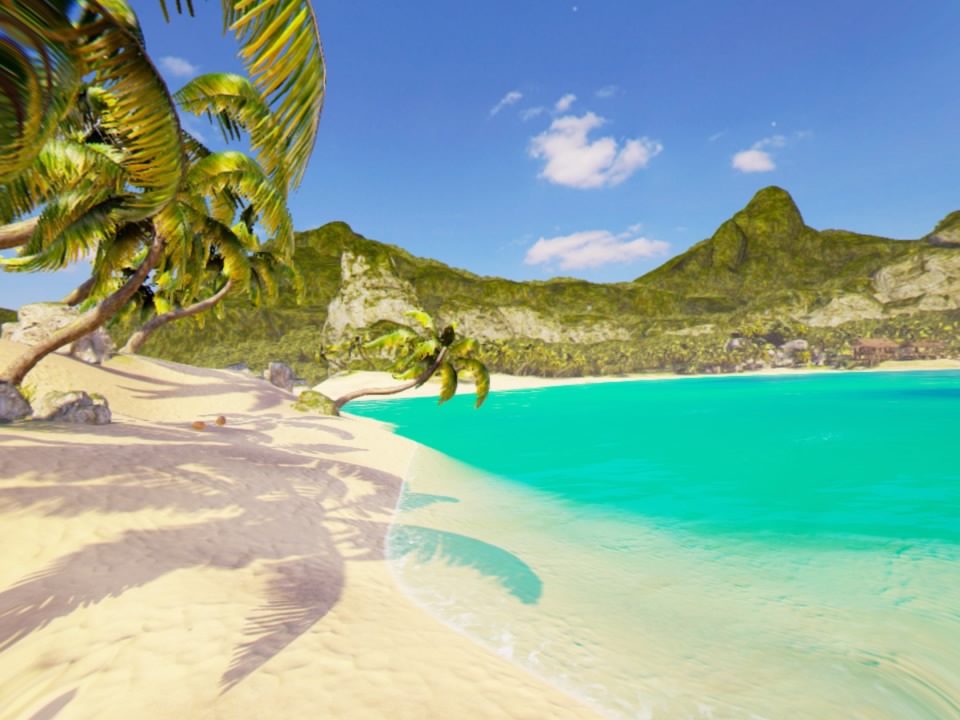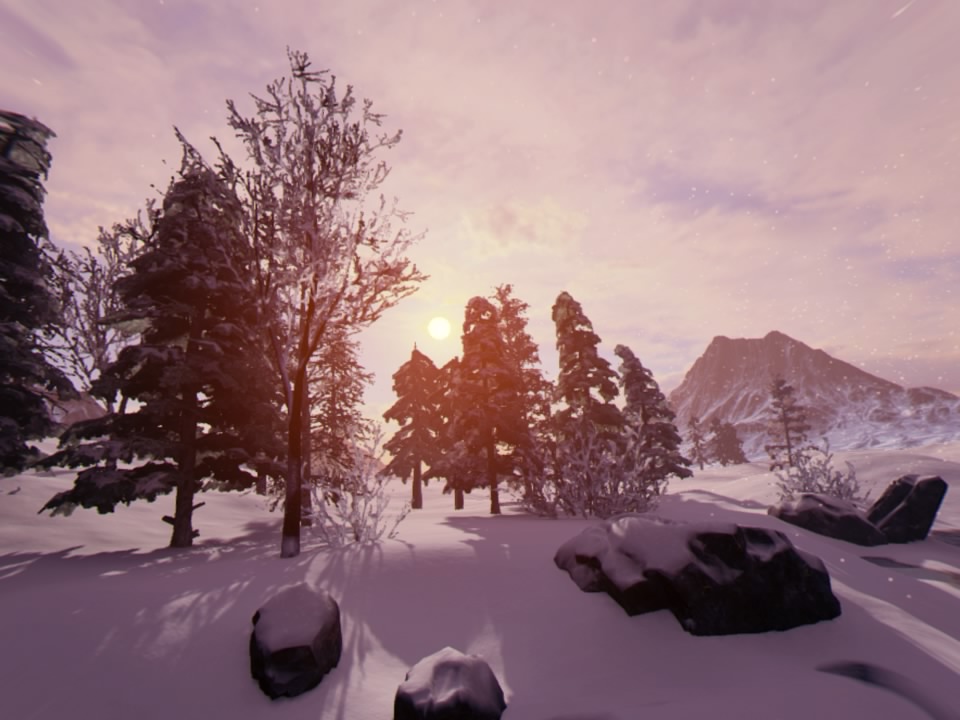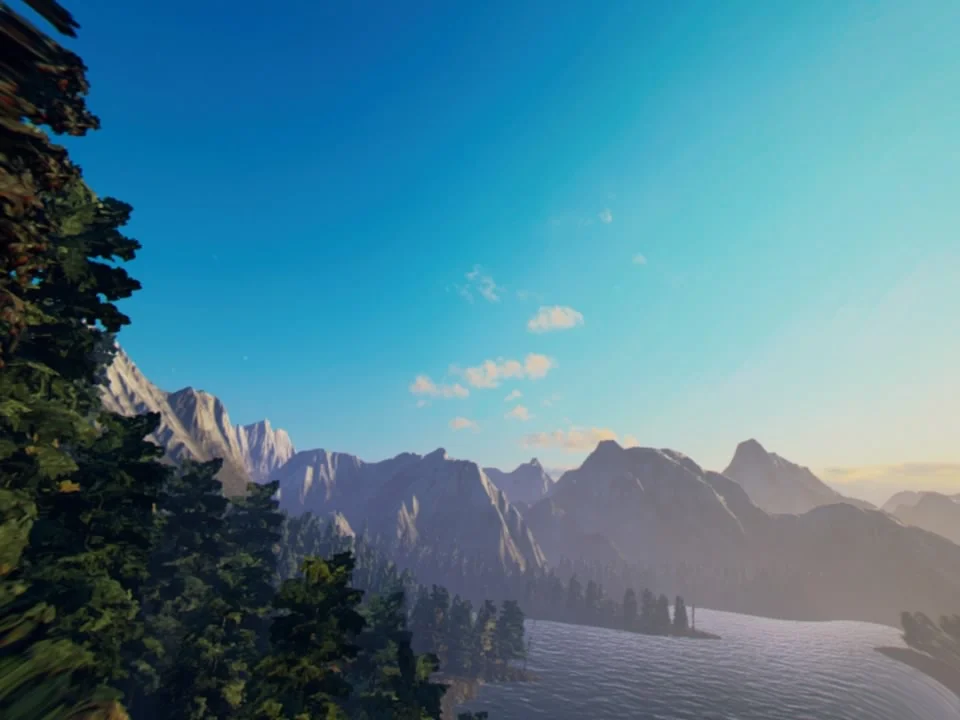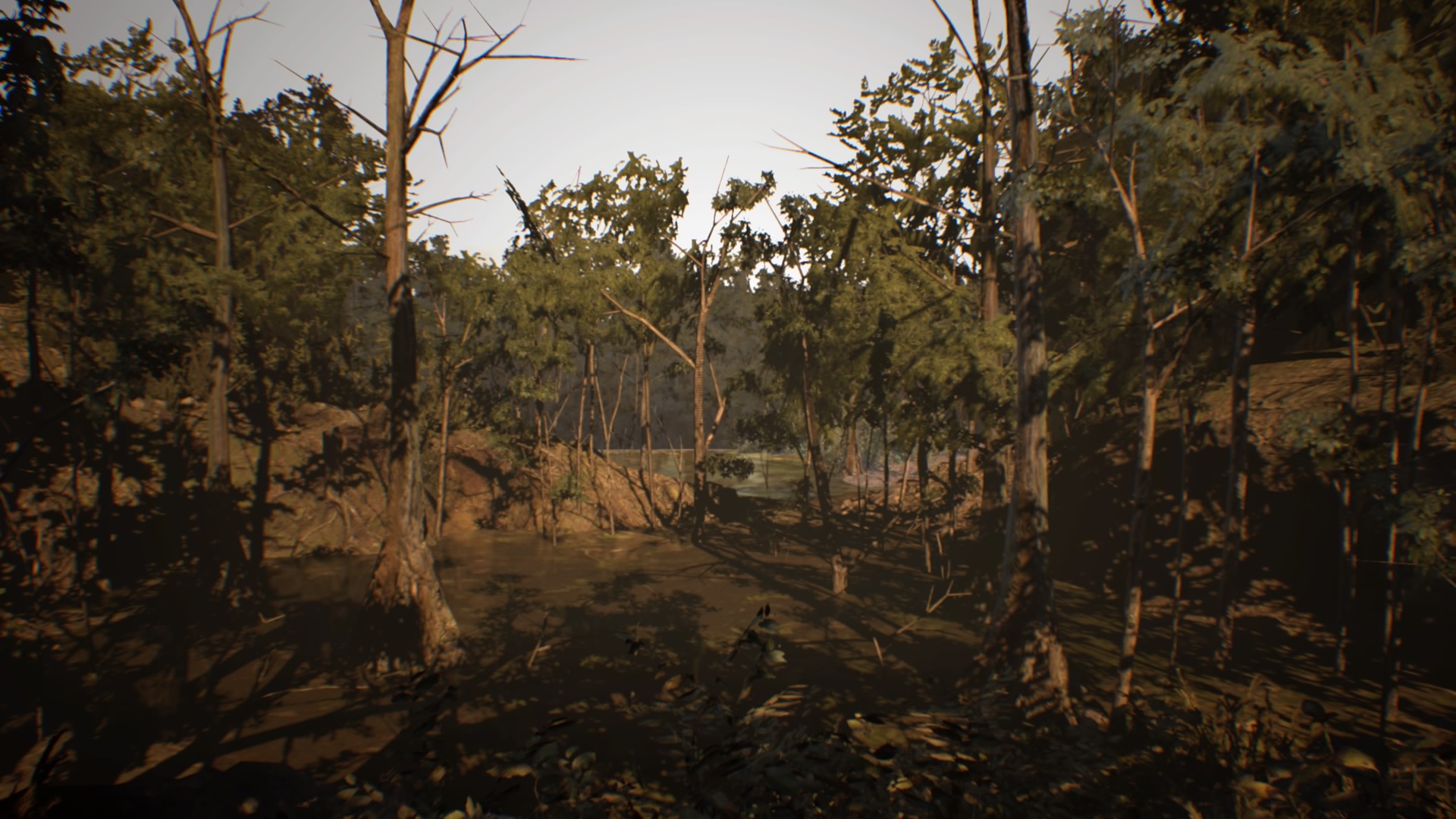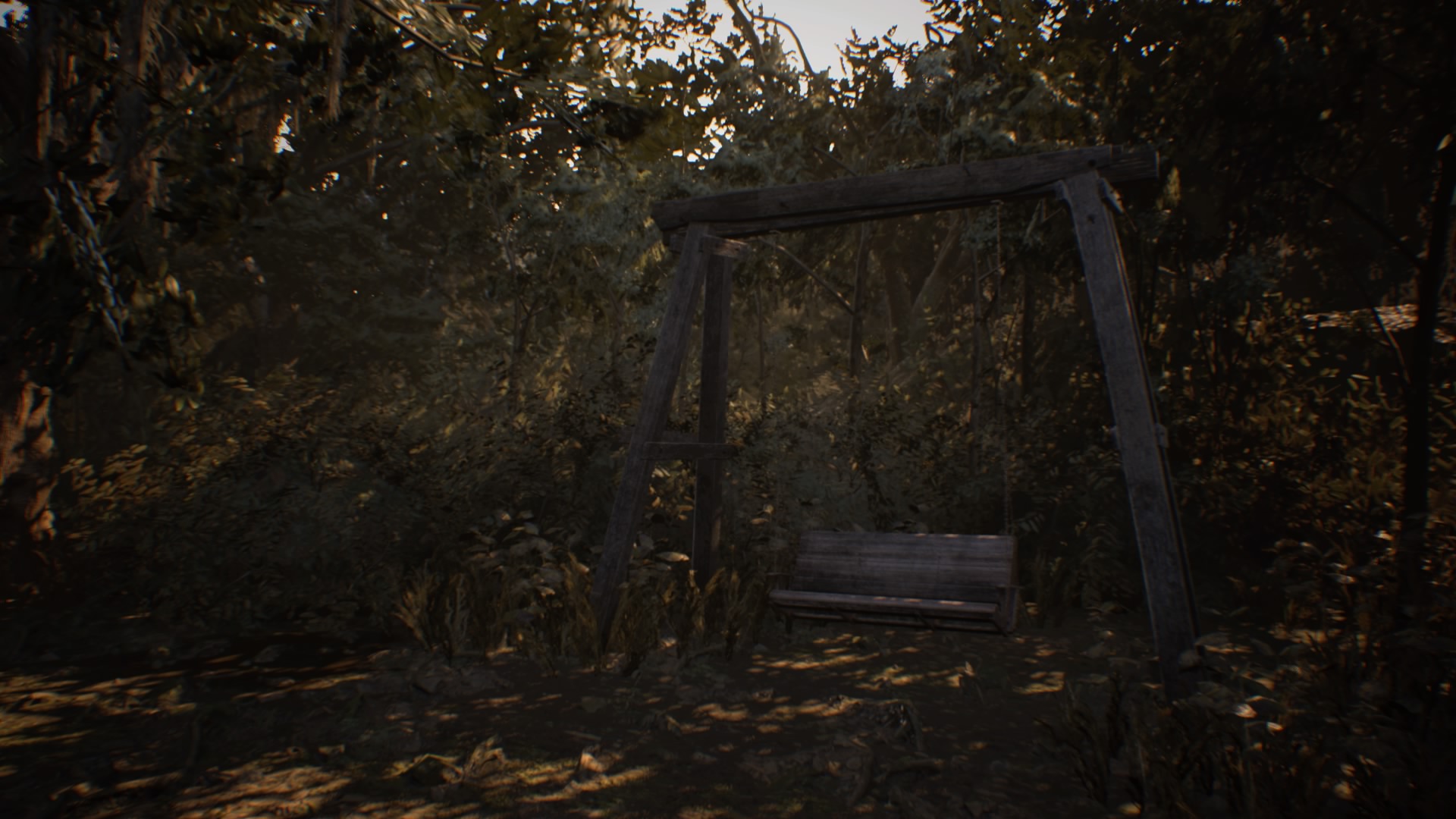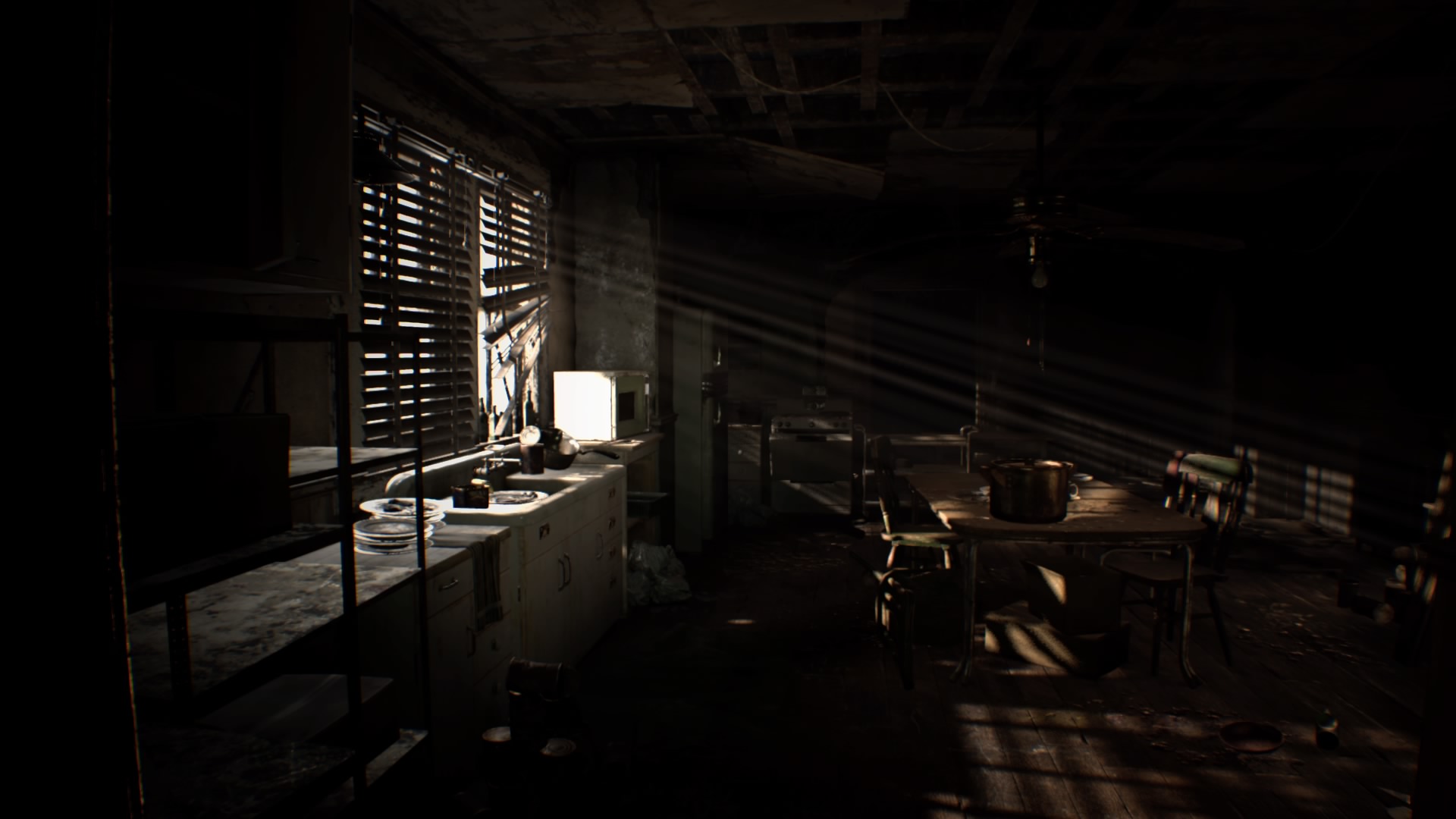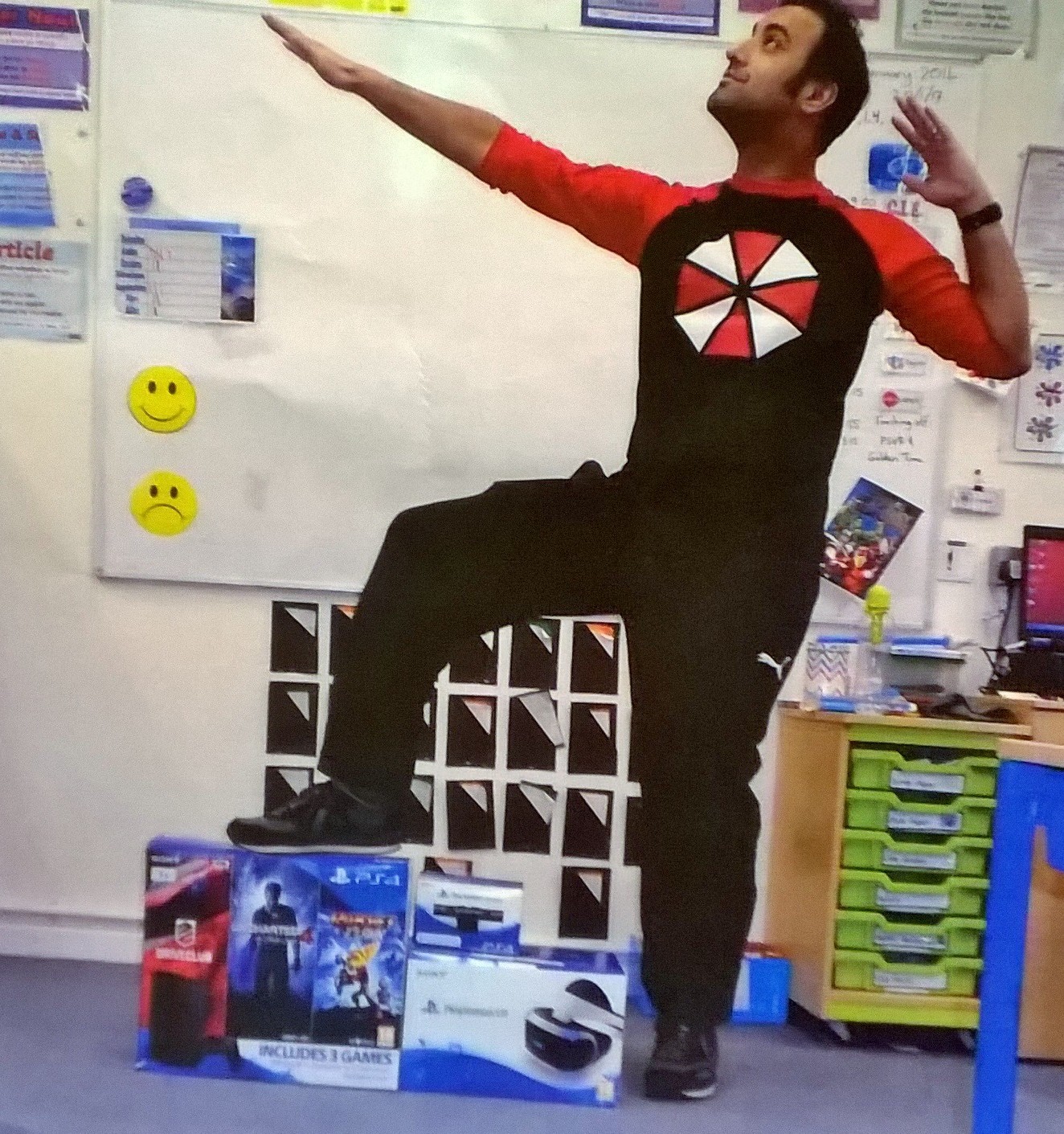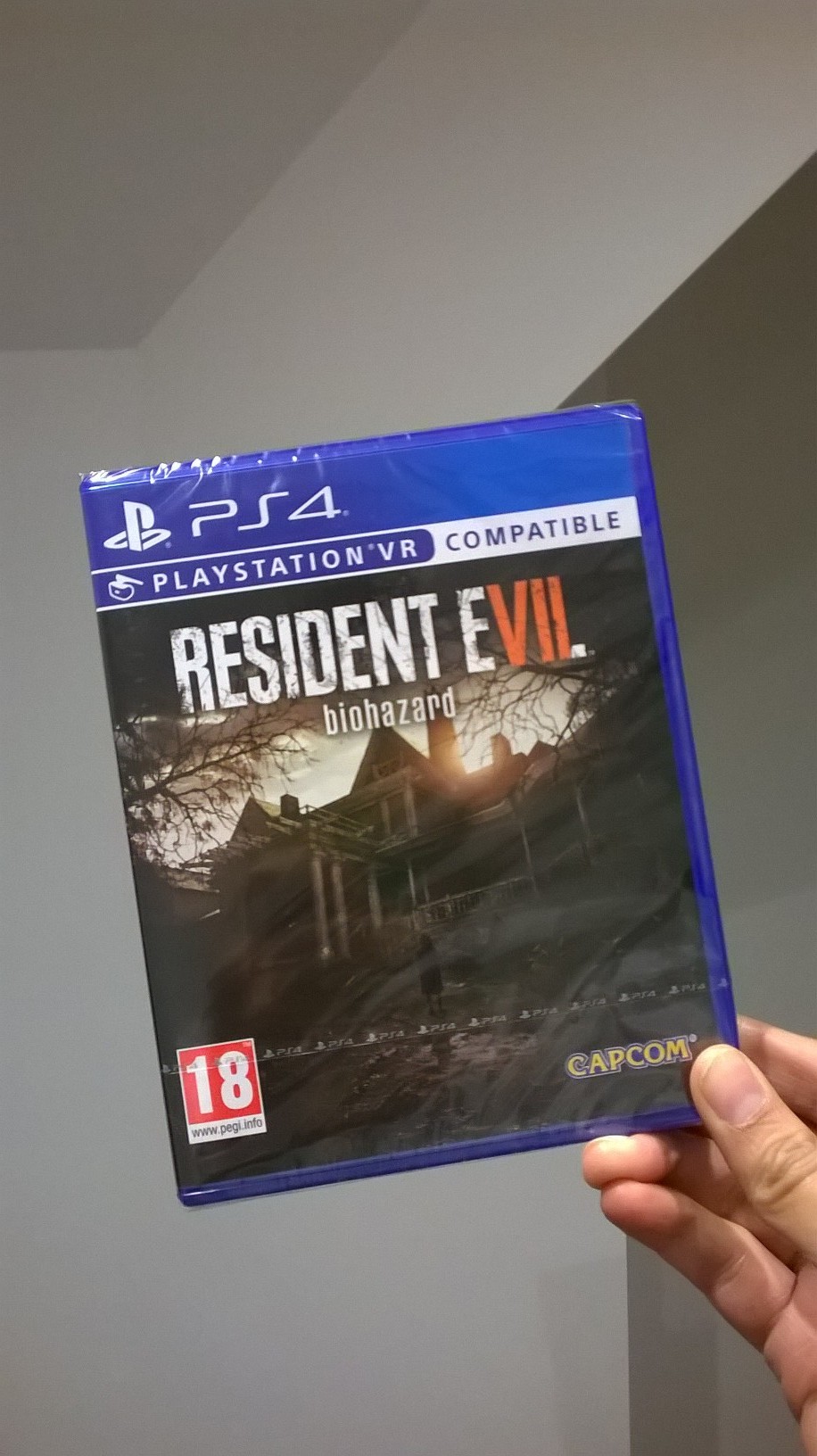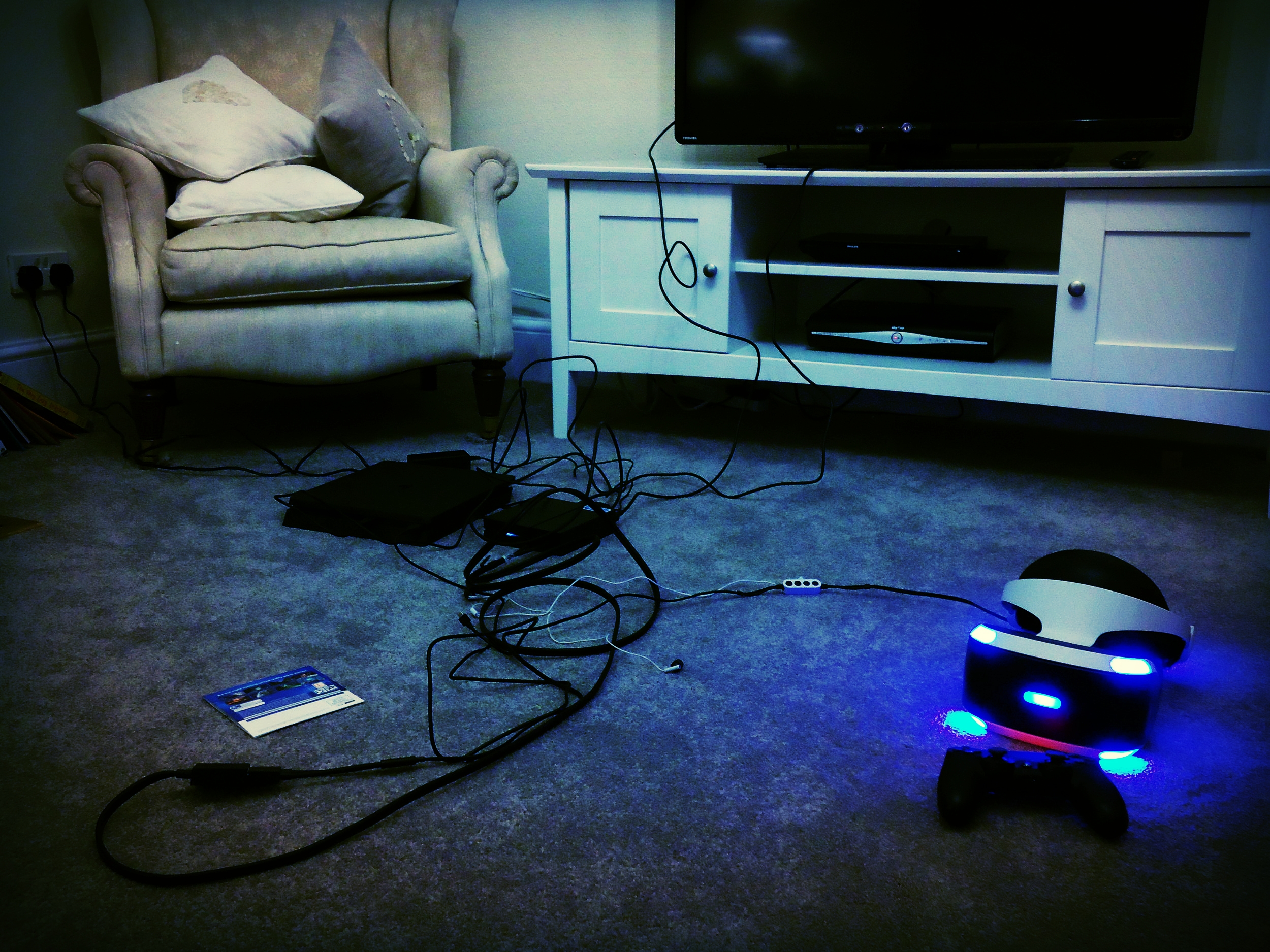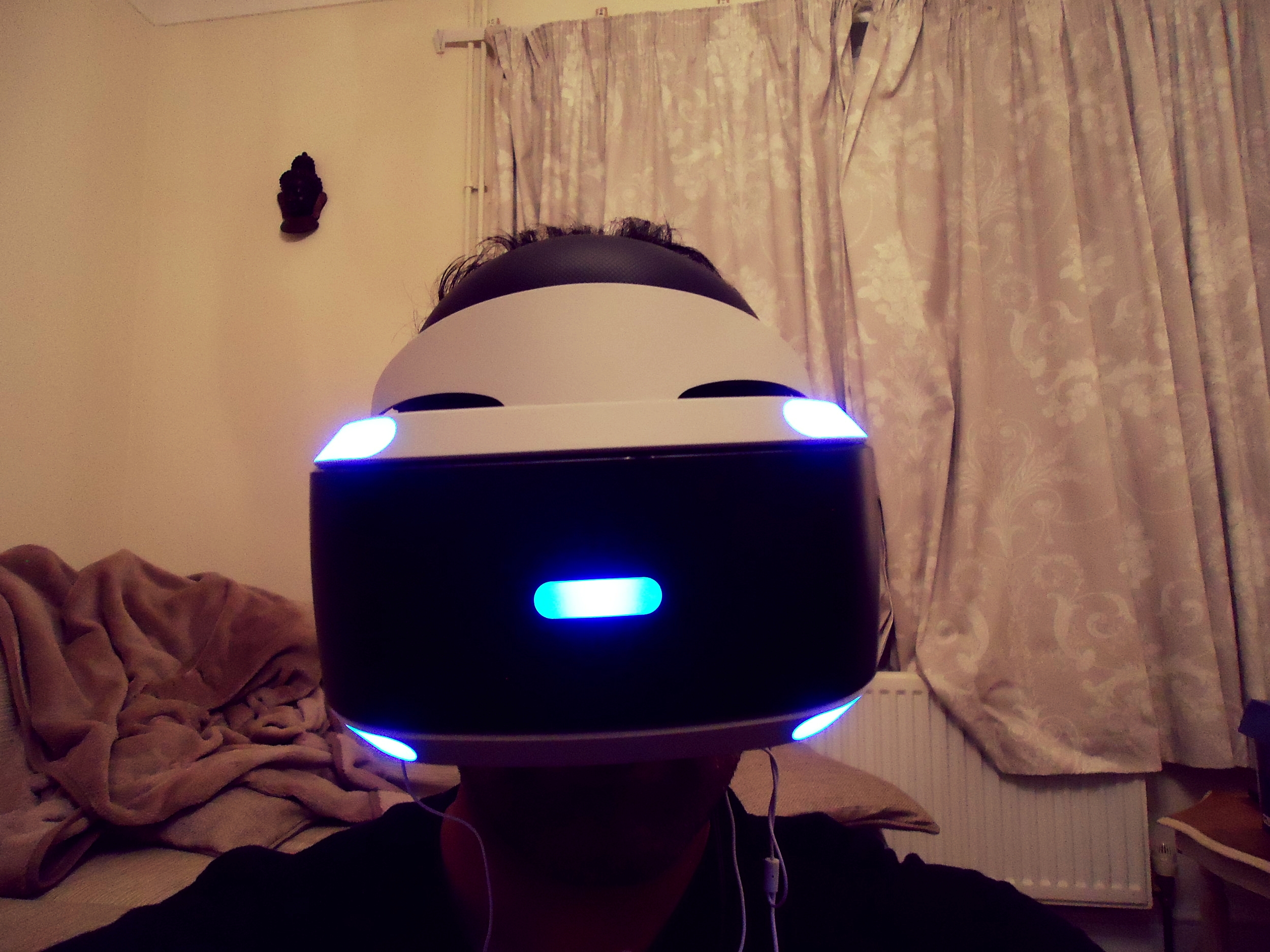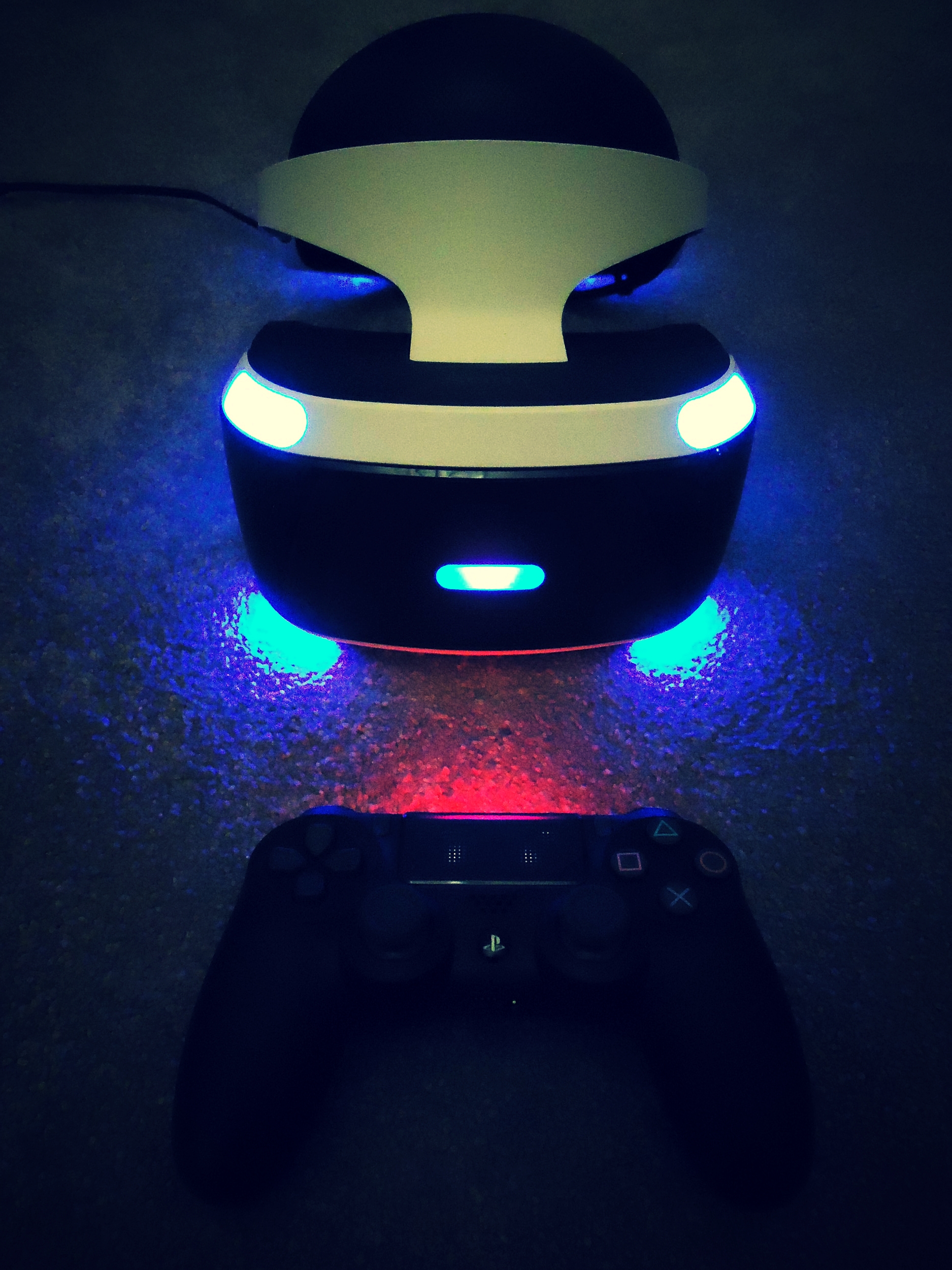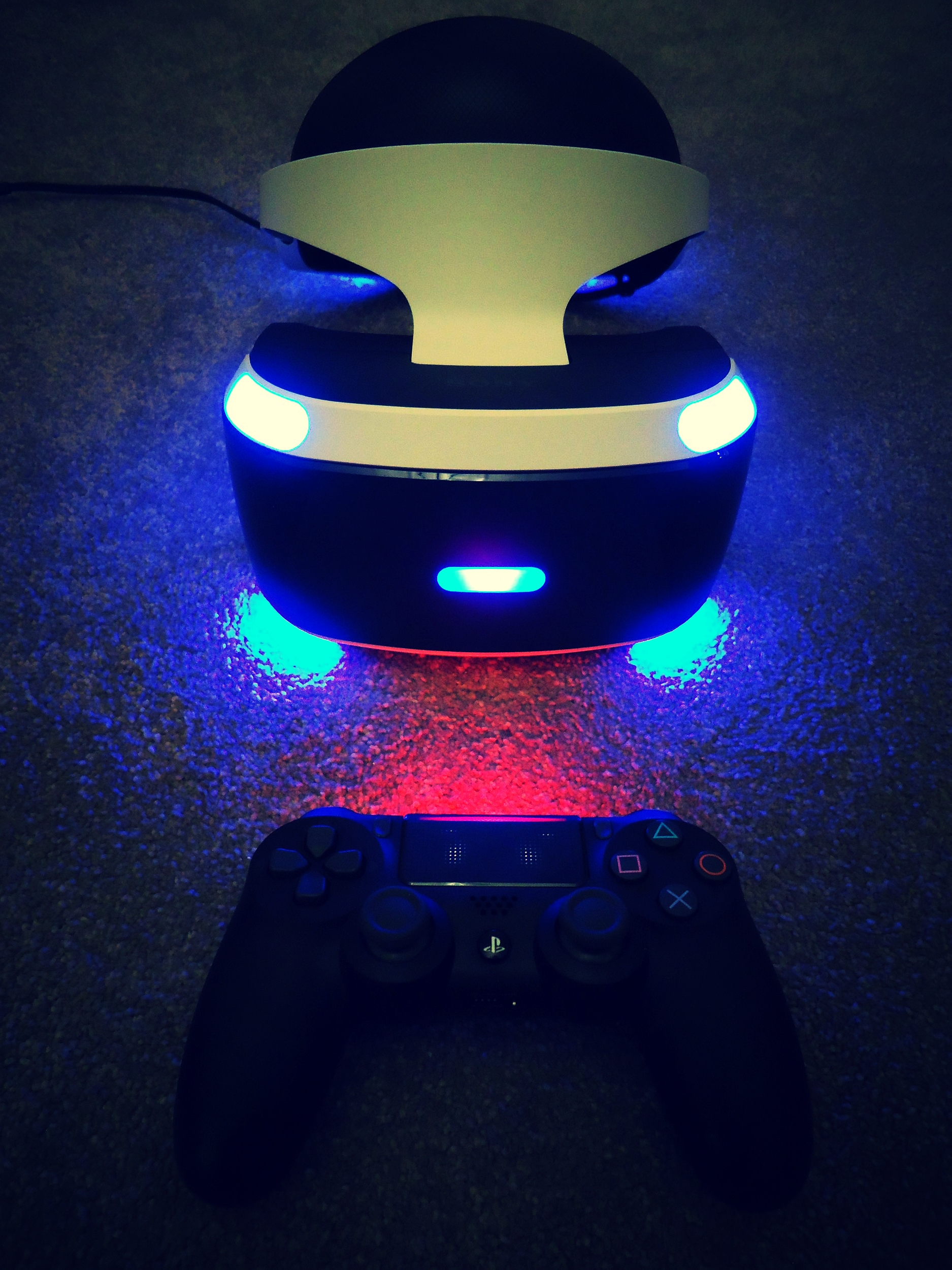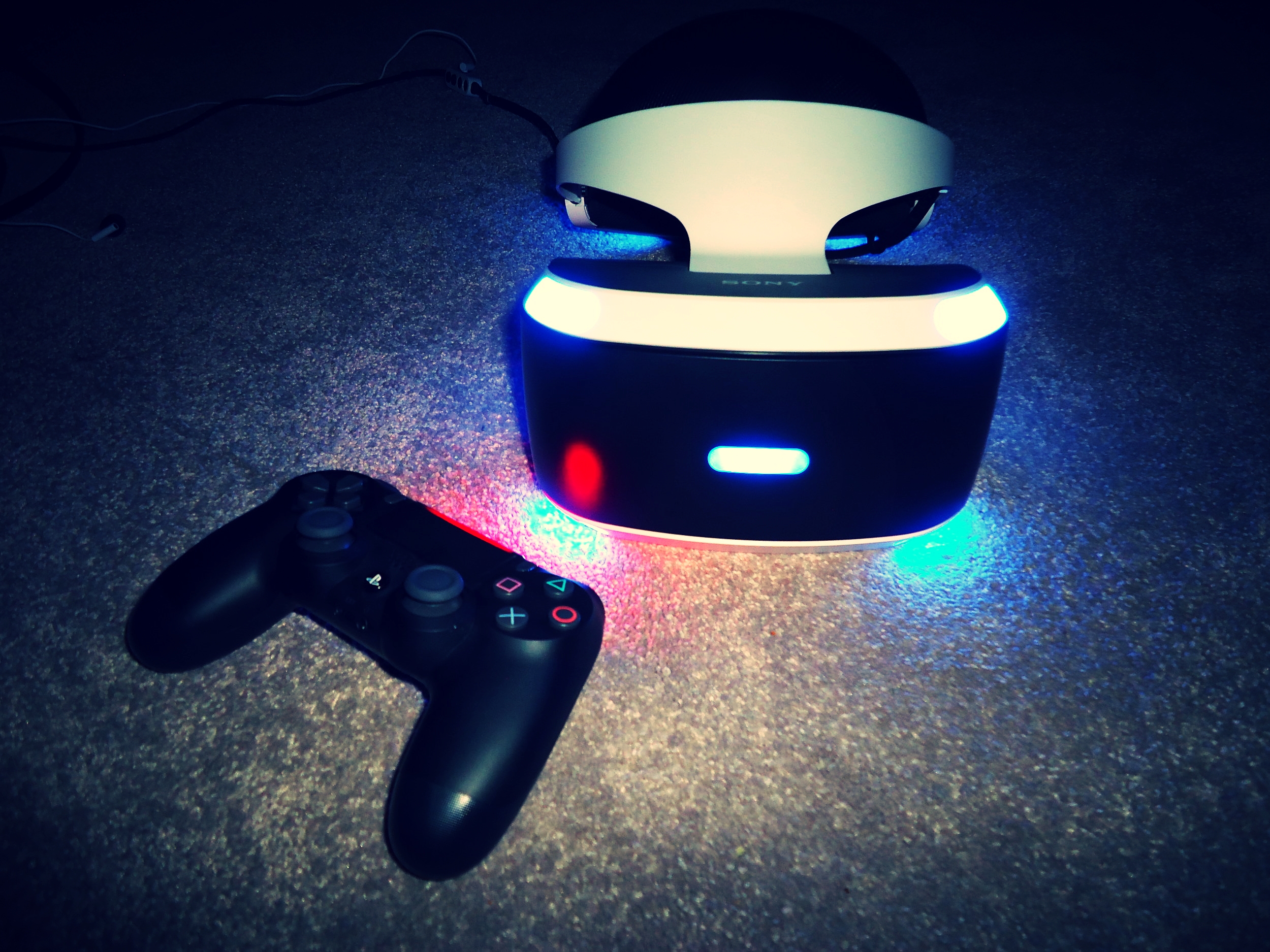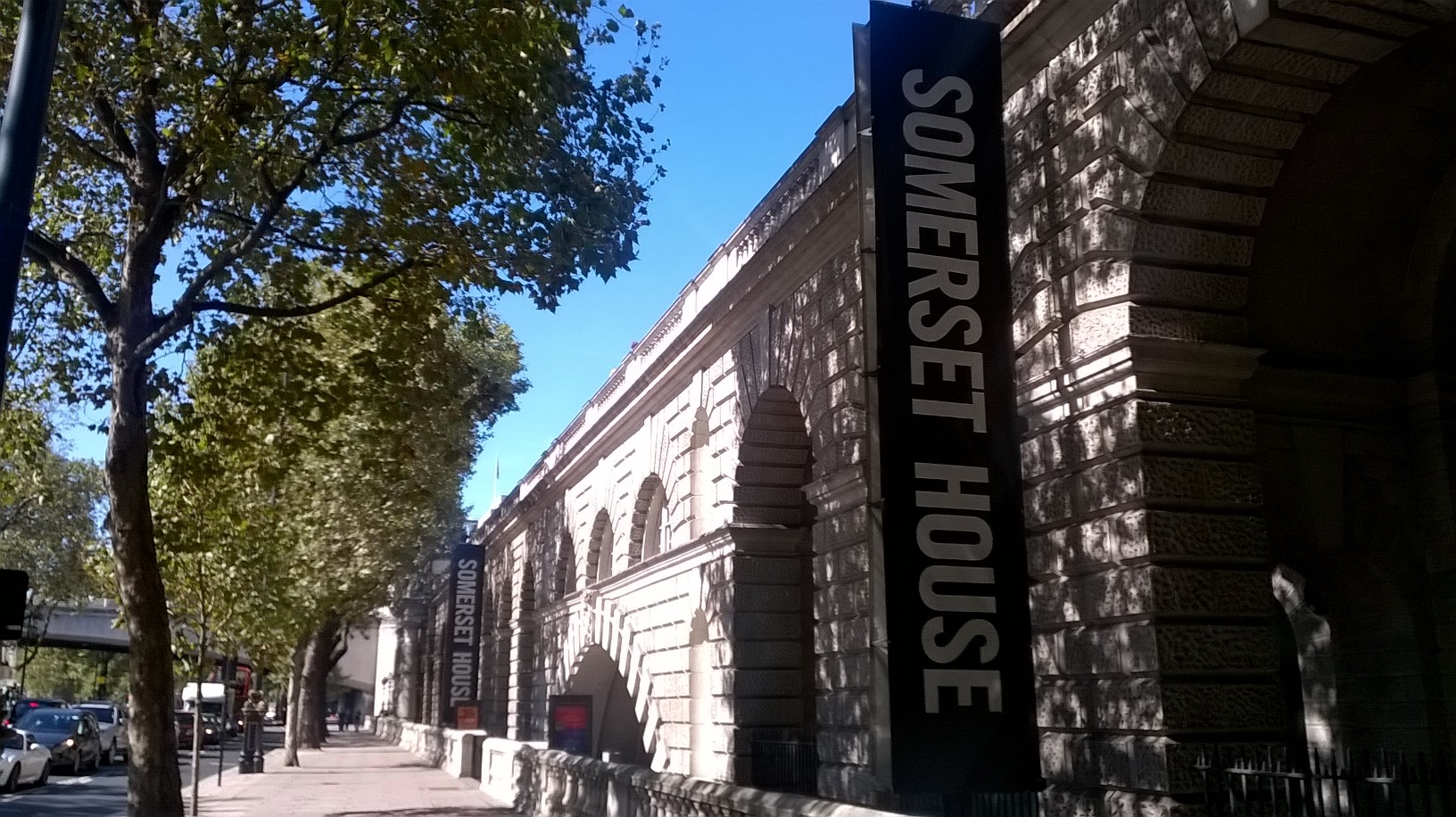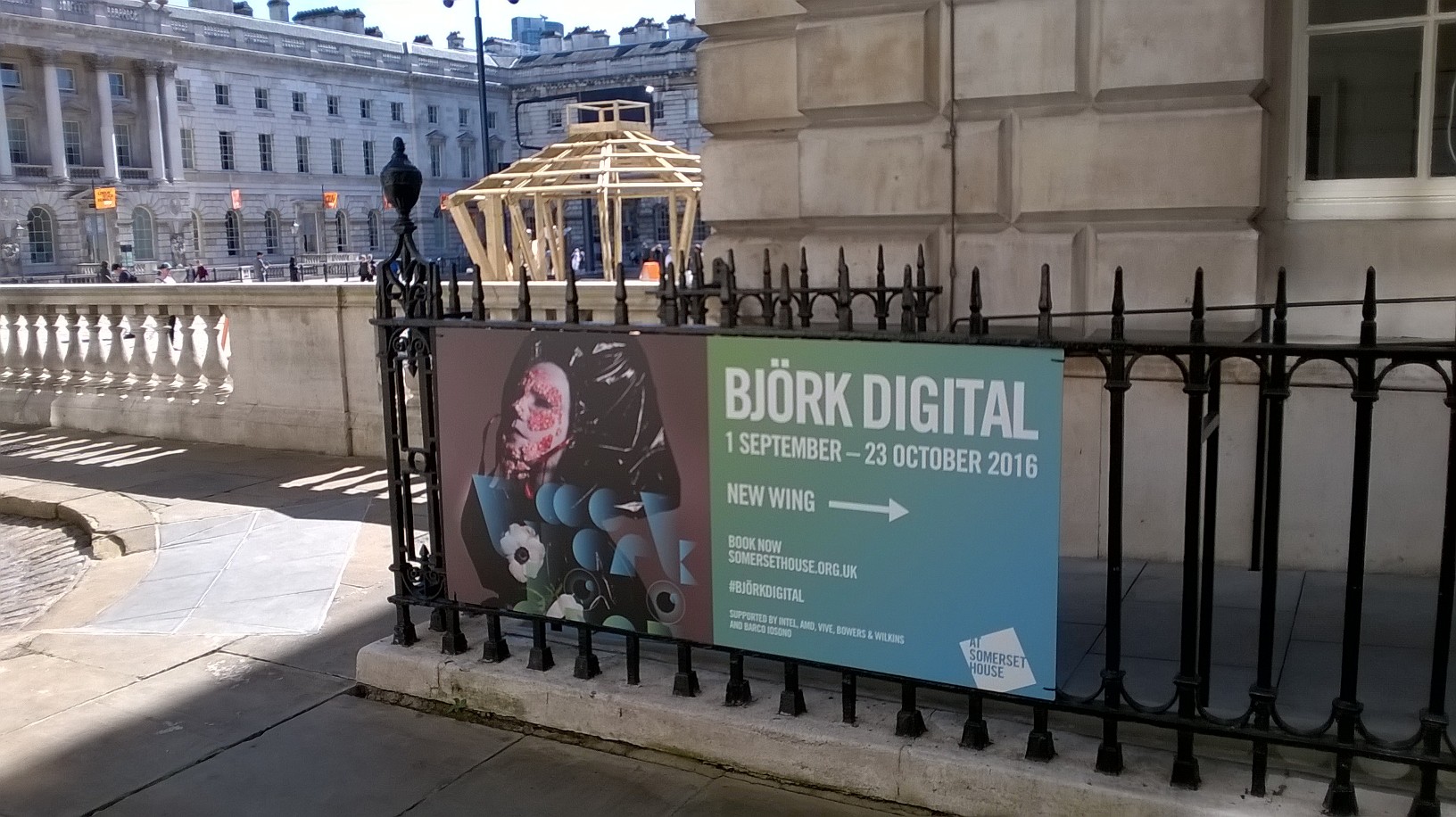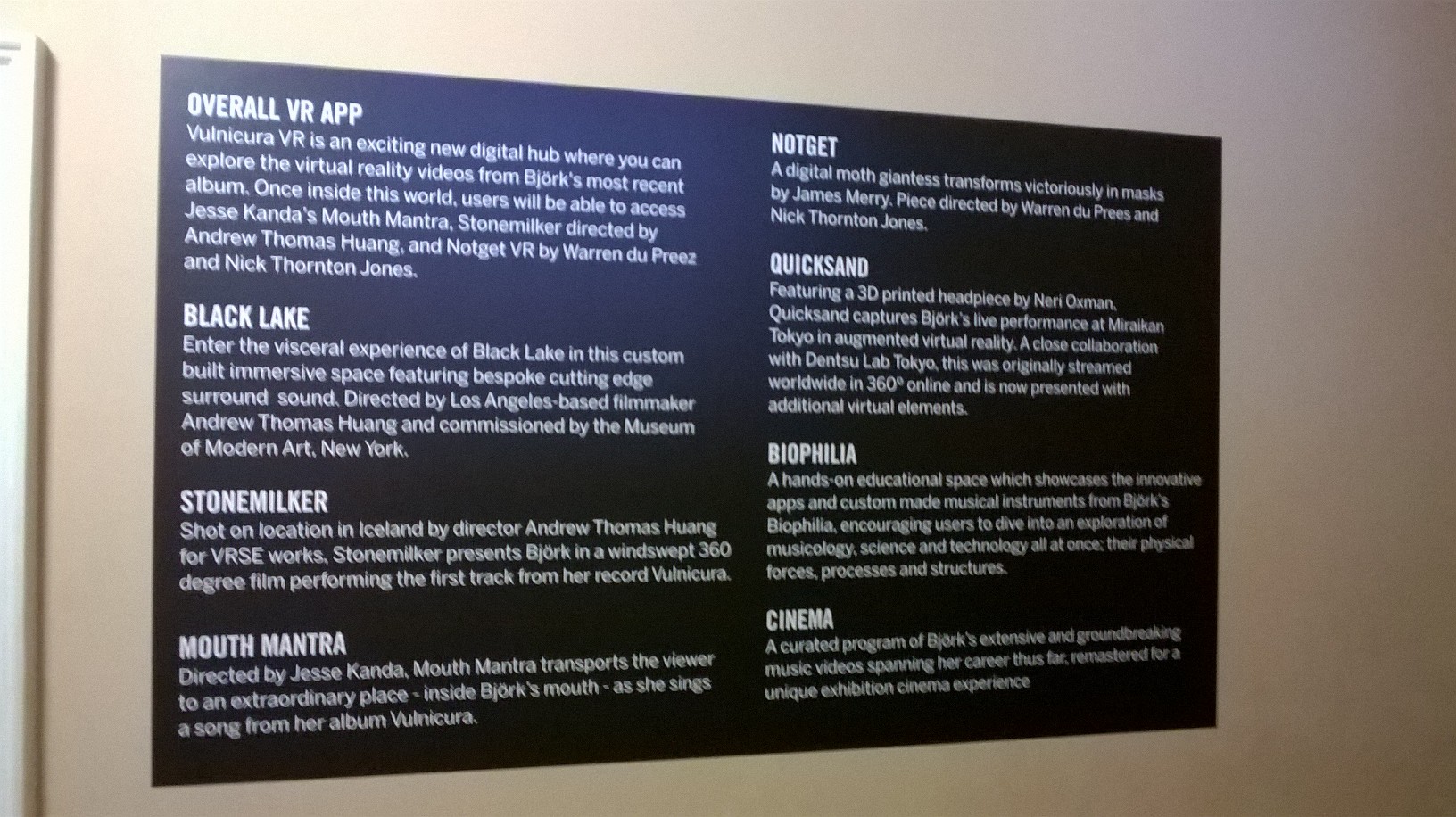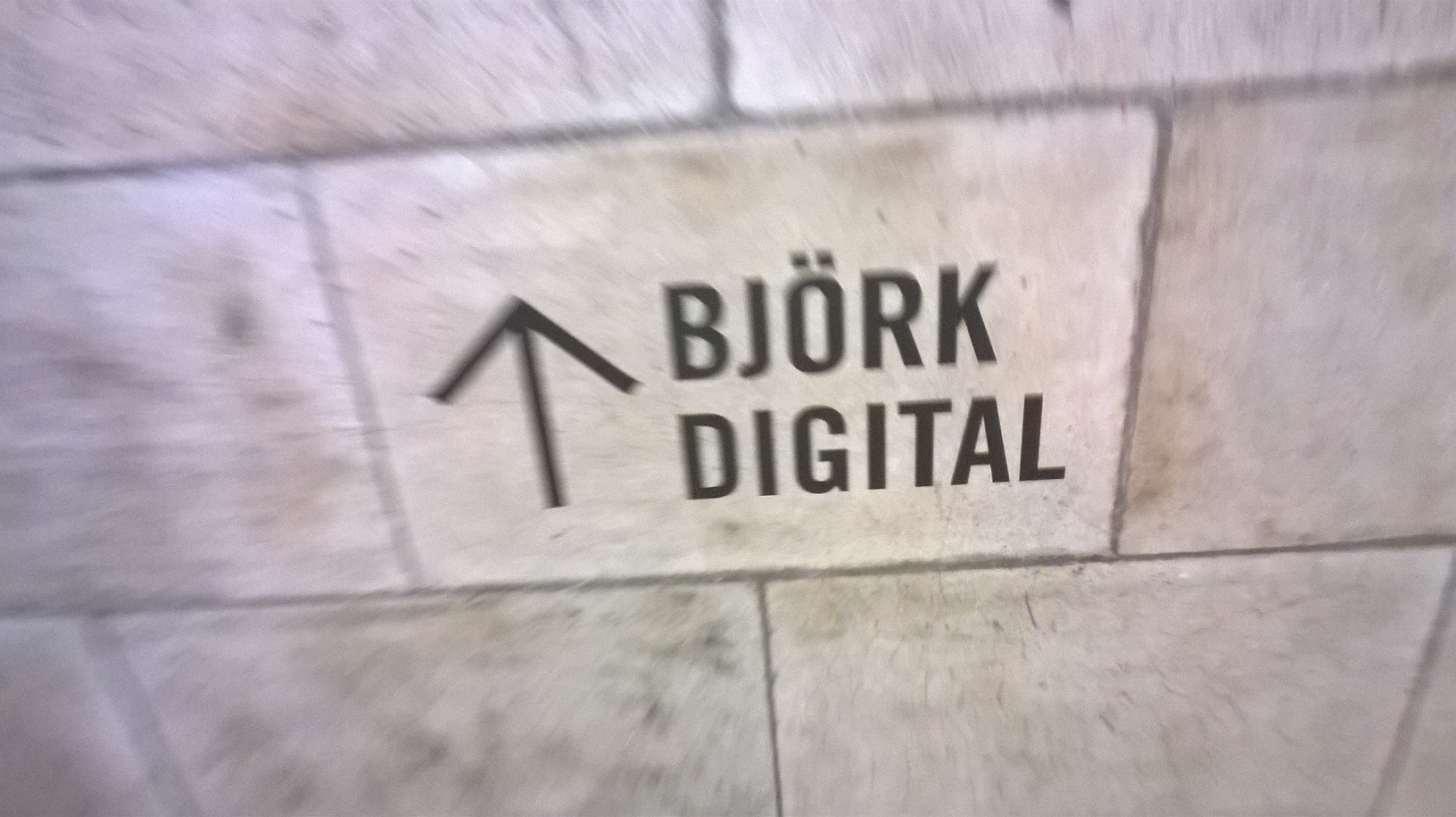The exhibition is guided for the first four stations and is restricted to about 25 people to ensure that everyone is comfortable in the spaces and that there are enough VR headsets available. The activities are:
Black Lake
The first room in the exhibition is a dark room which contains two widescreen TVs mounted on walls that are facing each other. The video for 'Black Lake' starts and shows two aspects of the same video, so on one screen you see Bjork singing in the Icelandic hillside and in the other you see the view she is seeing, the video constantly swaps around and so you see different aspects of the same video. The sound surrounds and envelops you, the floor vibrates with the bass and the whole effect is immersive.
Virtual Reality
The next two rooms are virtual reality experiences using the Oculus Gear VR and Bowers and Wilkins headphones. Through the use of 360 dome cameras the videos are filmed and stitched together to give you complete 360 degree freedom, this does give you a sense of presence but the downside is that you cannot move forward but only look around.
Stonemilker
Stonemilker places you in the 360 degree landscape of Grótta beach in Iceland. Bjork sings the song and during the course of the video multiplies, at one time there are three Bjork's singing! The detail is impressive and even though the technology showcased is quite old the effect is wonderful as you feel very close to Bjork physically as she sings and sashays to her lyrics and music. This is the closest most of us will ever get to the pioneering musician.
Mouth Mantra
Mouth Mantra is a VR video again and has the same technical set-up as for Stonemilker but is a very different experience, placing you inside Bjork’s mouth. The VR video shows very white teeth, no fillings and lots of tonsil and tongue... I was fine watching this but I can imagine some people really struggling to watch this.
Notget
This VR experience was the highlight of the exhibition for me. Using a real-time graphics engine the image of a glowing orange mask with decorative lines sings, as the song progresses a body starts to emerge and starts to shoot out neon sparks. It reminded me of the patterns found in a Cave bullet hell shoot'em ups videogame mixed with the visuals of the video game Rez and the entrancing quality of a Sharon Apple concert from Macross Plus. This VR experience shows the potential this medium can have, the music dynamically changing as you moved. This experience really immersed me and I can see the possibilities of VR concerts.
These were the guided and timed part of the exhibition but the rest was available to go through at your own pace.
The Cinema
Bjork has worked with some of the finest music video directors on the business and this room shows her back catalogue of music videos. People were sitting all over the floor and watching her videos, I entered the room just as the music videos from her last two albums came on. I sat for their duration as I have seem all the others due to the fact I have them on her 2 part DVD collection, Volumen but haven't seen any of her video since. It was wonderful to see how Bjork's music videos had changed over time and I had a chance to appreciate it with my fellow Bjork fans.
Biophilia
In one of the side rooms there were numerous tablets set up with the Biophilia suite. I've spoken about the app before but for the uninitiated Biophilia is an education app that combines music with technology, musicology is you will. The app is excellent and I have used it in class to teach music theory. The fact that it contains a voice-over by one of my favourite humans, Naturalist David Attenborough is an added bonus.
Overall the exhibition is well worth a visit. Fans of Bjork will find much to like and experience and for the uninitiated the VR experiences may convert you into this technology.





